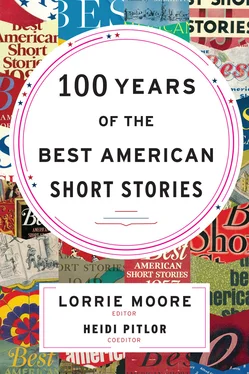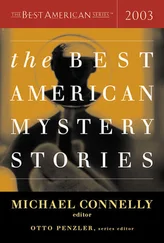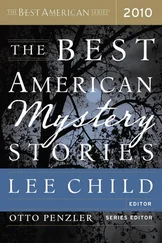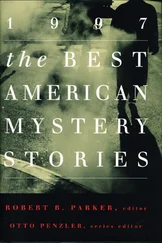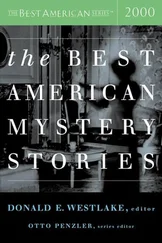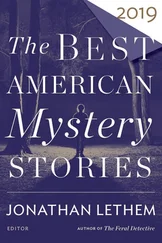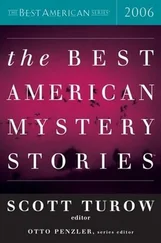“What is it?” God asked.
Ellerbee heard a strange noise and looked around. The damned, too, were on their knees — all the lost souls, all the gargoyles, all the demons, kneeling in fire, capitulate through Hell like a great ring of the conquered.
“What is it?” He asked.
“To kill us, to end Hell, to close the camp.”
“Amen,” said Ellerbee and all the damned in a single voice.
“Ha!” God scoffed and lighted up Hell’s blazes like the surface of a star. Then God cursed and abused Ellerbee, and Ellerbee wouldn’t have had it any other way. He’d damned him, no surrogate in Saint’s clothing but the real McCoy Son of a Bitch God Whose memory Ellerbee would treasure and eternally repudiate forever, happily ever after, world without end.
But everything was true, even the conventional wisdom, perhaps especially the conventional wisdom — that which had made up Heaven like a shot in the dark and imagined into reality halos and Hell, gargoyles, gates of pearl, and the Pearl of Great Price, that had invented the horns of demons and cleft their feet and conceived angels riding clouds like cowboys on horseback, their harps at their sides like goofy guitars. Everything. Everything was. The self and what you did to protect it, learning the house odds, playing it safe — the honorable percentage baseball of existence.
Forever was a long time. Eternity was. He would seek out Ladlehaus, his murderer’s accomplice, let bygones be bygones. They would get close to each other, close as family, closer. There was much to discuss in their fine new vocabularies. They would speak of Minneapolis, swap tales of the Twin Cities. They would talk of Ron, of others in the syndicate. And Ladlehaus had seen May, had caught her in what Ellerbee hoped was her grief on the Six O’Clock News. They would get close. And one day he would look for himself in Ladlehaus’s glowing blisters.
Series editor Shannon Ravenel simplified The Best American Short Stories . She got rid of most of the lists and of the series editor’s foreword, keeping only the list of magazines and biographical notes. In 1987 she did, however, institute the contributors’ notes, brief essays by the stories’ authors describing their inspirations for their chosen pieces. Here they often revealed intimate truths about the writing process. Charles Baxter described “desk pounding, swearing, and pages flung into wastebaskets.” Madison Smartt Bell admitted, “I still sometimes wish I could have made [this story] just a little shorter.” Joy Williams wrote, “It is the unsayable which prompts writing in the first place.”
Ravenel referred to the 1980s as “another golden age” for short stories. Because of the growing number of MFA programs and literary journals, the latter made possible by a larger budget for literature in the National Endowment for the Arts and stronger state arts councils, the amount of short fiction published each year increased. And story collections and anthologies were more frequently reviewed in magazines and newspapers. In 1977 Ravenel read 900 short stories, in 1989 over 2,000. She said, “The short story in the 1980s was it .”
Ravenel worked with such guest editors as Joyce Carol Oates, Hortense Calisher, Gail Godwin, Raymond Carver, and Ann Beattie. “Each of the guest editors was different,” she noted. “John Updike wanted control over the Distinguished Others list. Anne Tyler wanted to know if I had a secret list of my own (I did) and how closely our two lists corresponded (80 percent). Stanley Elkin asked me to his home to discuss each of his selections and I argued him out of one and into a replacement.” Her most memorable experience may have been with John Gardner:
Just before it was time for me to send him the tear sheets of my 120 selected stories, I broke my leg (roller skating with my kids), but I managed to Xerox all the tear sheets, package up the originals, and get them off to Mr. Gardner by my deadline… Two weeks later, I had a phone call: John Gardner did not like a single one of the 120 stories I had sent him and wanted me to ship him the magazines so he could do his own reading and selection. Well. That year I had subscriptions to 151 magazines. Most of them were quarterlies, though many were monthly and at least one supplied 52 issues. So there was a huge pile in our basement that I was supposed to package up and mail to John Gardner. I did it, with my husband’s help… As it turned out, John Gardner selected nine of my 120 and found another eleven on his own. The “100 Other Distinguished Short Stories” in the back of the 1981 volume are mine. All I can say is that all the rest of the volumes I edited were breezes in comparison.
In 1982 Ravenel cofounded Algonquin Books, devoted to publishing new writers. She also created the series New Stories from the South . She continued the tradition of supporting small magazines and new writers in The Best American Short Stories: Lynn Sharon Schwartz, Charles Baxter, Ethan Canin, Richard Ford, Amy Hempel, and Mona Simpson all appeared in the series early in their careers.
Divorce, addiction, and AIDS were concerns for writers in the 1980s. Others wrote of the psychological aftermath of the Vietnam War. Tim O’Brien’s story “The Things They Carried” was an unforgettable indictment of that war. As Ravenel wrote, he “has taken the plainest kind of communication, the list, and turned the form itself into the theme of his powerful story.”
In his introduction, guest editor John Gardner bemoaned the number of authors employing the present tense in their stories, writing that “the present tense turns out to be, itself, the message: One may with great sensitivity watch things happen… but one is silly to expect anything. Life, if one wishes to call it that, goes on: consciousness is all.”
Minimalism — or as John Barth referred to it, “‘K-Mart realism,’ ‘hick chic,’ ‘Diet-Pepsi minimalism’ and ‘post-Vietnam, post-literary, postmodernist blue-collar neo-early-Hemingwayism’”—was also popular in the 1980s, possibly due to a weariness from the war in Vietnam and the American culture of excess. In 1986 Anne Tyler wrote, “Even the sparest in style implies a torrent of additional details barely suppressed, bursting through the seams.” Others recoiled at the trend. In 1988 guest editor Mark Helprin stated, “No better illumination of the pitfalls of the collective impulse exists than the school of the minimalists… Their characters always seem to have a health problem… How so many people can be sitting in so many diners, trailers, and pickup trucks with so many ingrown toenails, varicose veins, corns, bunions, boils… is the secret of the Sphinx.”
1980GRACE PALEY. Friendsfrom The New Yorker
GRACE PALEY (1922–2007) was born in the Bronx. Her parents were Jewish socialists who had emigrated from the Ukraine. Paley’s childhood was full of people and friendship and political arguments, all of which worked their way into her later writing.
Paley called herself a “somewhat combative pacifist and cooperative anarchist.” Over the years she lobbied for pacifism and was jailed because of her protests against war and the maltreatment of women.
Paley wrote three collections of short stories, The Little Disturbances of Man, Enormous Changes at the Last Minute, and Later the Same Day. Her stories focused mostly on the daily lives of Jewish women living in New York. She said once, “I’m not writing a history of famous people. I am interested in a history of everyday life.” The Collected Stories of Grace Paley , published in 1994, was a finalist for both the Pulitzer Prize and the National Book Award. From 1986 to 1988 Paley was New York’s first official state author; she was also once poet laureate of Vermont.
Читать дальше
